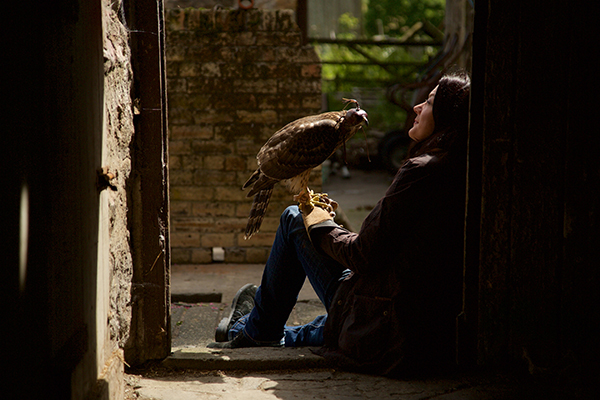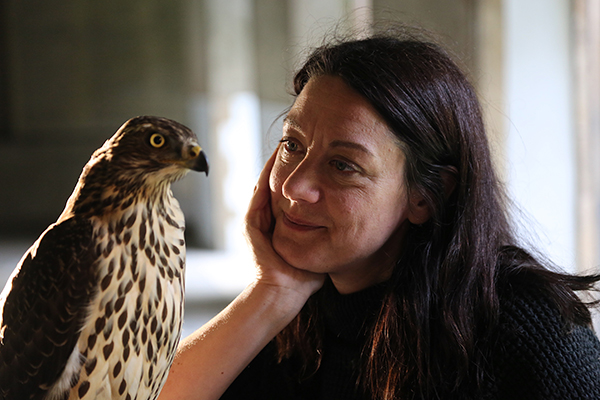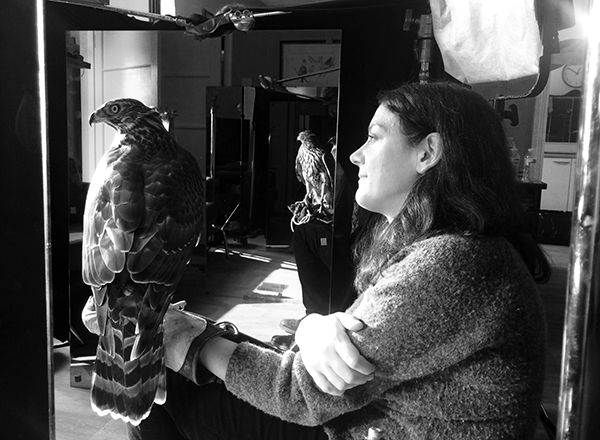H is for Hawk: A New Chapter
With Helen Macdonald (author of H is for Hawk)
Directed by Mike Birkhead and Beth Jones
I was bewitched by Helen Macdonald’s memoir of how she trained a goshawk. This wasn’t nature writing I’d ever come across before. It was never patronising, never avuncular. I had no sense of being led from page to page by an expert, all-knowing hand. But Helen is an expert: she is one of the world’s best falconers. However, there is a sense with Helen, I think, that she often resists what is expected. The book is a spectacular example of how nature writing can be different, personal, passionate.
And so, on a day close to Christmas, I went to meet Mike, to give him H is for Hawk. He would love it too, I knew. But on my way, he rang me. He was outside a bookshop, he said. He was thinking of buying a book called H is for Hawk, he said. Did I know if it was any good? I felt the beribboned brown paper parcel under my arm. It’s supposed to be terrible, I lied. Don’t waste your money...
As soon as he had read it, we both knew we wanted to try and film something of the incredible story of how Helen had tried to cope after the unexpected death of her father by training a ferocious bird of prey. But it took a year to try and persuade Helen to trust us with her tale, and even longer to get it funded. Even thought the book had won Costa Book of the Year Award and the Samuel Johnson Prize for Non-Fiction, goshawks and grief was not an easy sell. Luckily, Tom McDonald, BBC’s Head of Commissioning, was an early ally. Having loved the book he too wanted to see Helen on screen.
Since the book had been published, Helen’s life had moved on, she had become a different, happier person, she said. And now she wanted to train a new goshawk and thought that such a process had never been documented before on film. She asked a friend and fellow falconer to find her a new captive bred bird to train – a female, like her first hawk, Mabel - and while we waited for her to be ready we set out to film goshawks in the wild.
“Looking for goshawks is like looking for grace,” Helen wrote, “it comes, but not often, and you don't get to say when or how.” They are secretive, elusive forest ghosts but they do reveal themselves above the canopy once a year – on clear, spring mornings just before mating. Cameraman Barrie Britton had to use all his patience, expertise and specialised long-lens skills to capture the birds in flight. Next, tree-rigging expert James Aldred climbed high off the ground and spent hundreds of hours in a tiny hide filming a wild goshawk nest. Later in the year, cameraman John Waters and specialist bird-handler Lloyd Buck fought against the low, British woodland light to use a Phantom camera for stylised shots revealing a flying goshawk up close. Perhaps the greatest challenge of them all, however, was filming the exhausting process of training a hawk, and that belonged to cameraman George Woodcock, who, in a tiny farmhouse, had to make himself and his kit invisible, sometimes hiding behind doors, sometimes sweltering under black sheets, gaining the trust of both the hawk and Helen, while she spoke of the difficulty of losing both her father and, subsequently, Mabel. It helped that, as her father had been a photographer, Helen could recognise and admire George’s skill.
We had a year to make the programme and our very fine production manager Cherry Dorrett ensured we could have George and spectacular editor Nigel Buck on-board right from the start: Nigel’s edit of George’s beautifully-lit shots of the hawk right at the start of the programme is one of mine and Mike’s favourite moments. Seeing that for the first time was the best part of making it in fact: it was the moment we knew we might just be able to do justice to the story of goshawks and grief that Helen had entrusted to us.





